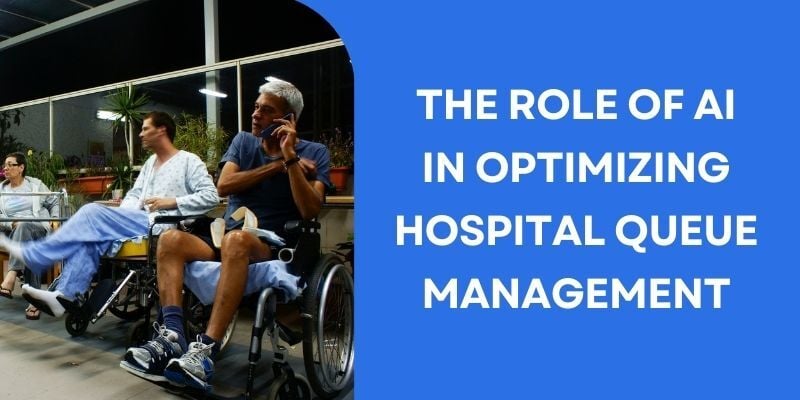In today’s tech-driven age, governments and strategic partners recognize the critical need for Digital Transformation for Local Government. This strategic shift aims to enhance service delivery, boost efficiency, and engage citizens effectively.
This article looks into the crucial components of this transformation, focusing on the key drivers propelling it forward. It sheds light on the benefits it promises, including streamlined operations and data-driven decision-making.
We provide actionable best practices, offering a blueprint for local governments keen on starting this transformative process.
Through insightful examples, we illustrate how Digital Transformation for Local Government has revolutionized the public sector landscape, paving the way for more responsive, agile, and citizen-centric governance.
Let’s look at how technology is reshaping the future of local government.
What Is Digital Transformation in Local Government?
Local government digital transformation is like a modern makeover of how local services work. It involves using technology smartly to serve citizens in the best possible way.
This allows local governments to work more effectively and provide quicker and more convenient services. It’s all about finding innovative solutions that optimize service, make things run smoothly, and ensure citizens receive top-notch service in today’s fast-paced world.
This transformation is the key to creating a more responsive and citizen-centric local government.
4 Key Drivers of Digital Transformation for Local Government

In the context of digital transformation in local government, it’s crucial to grasp the driving forces behind this shift. These drivers are the essential factors pushing the adoption of advanced technology and streamlined processes in providing public services.
Now, let’s delve into the specific components that lead the way in the digital transformation for local government, fundamentally reshaping how municipalities and communities engage and operate in this digitally-driven era.
1. Changing Citizen Expectations
When we talk about digital transformation for government, citizens now expect services to be as seamless as their experiences in other sectors, like online shopping or using apps.
This shift, often called the “customer journey,” underscores the need for smooth, user-friendly interactions. Citizens’ changing expectations stem from the high level of service they receive in these sectors.
Local governments must leverage technology to provide top-notch service from start to finish, meeting these elevated standards and ensuring citizens’ interactions are efficient and satisfactory.
2. Technological Advancements
Technological advancements are at the forefront of local government digital transformation. Innovations like AI-driven chatbots and sophisticated queue management systems have revolutionized delivering services.
These technologies streamline processes, reducing wait times and enhancing citizen satisfaction. Additionally, advanced data analytics tools provide valuable insights for decision-making, optimizing resource allocation and service delivery.
Embracing these technologies is crucial for local governments to stay agile and effectively meet the evolving needs of their communities in today’s fast-paced digital landscape.
3. Regulatory Requirements
Navigating regulatory requirements is a pivotal aspect of local government digital transformation. Adherence to data protection, accessibility, and compliance standards ensures that citizen information is secure and services are accessible to all.
Striking a balance between innovation and compliance is critical, as local governments must harness technology in ways that align with legal frameworks. This diligent approach safeguards citizen trust and lays a solid foundation for sustainable, legally sound digital initiatives within the public sector.
4. Cost Efficiency and Resource Optimization
Cost efficiency and resource optimization are vital in digital transformation for local government. Leveraging technology to automate manual processes and implement data-driven decision-making reduces operational expenses.
Cloud-based solutions, for instance, minimize infrastructure costs while enhancing scalability. Additionally, analytics makes resource allocation more precise, ensuring services are directed where they’re needed most.
Local governments can maximize their impact by prioritizing cost-effective solutions and delivering higher-quality services to their communities, ultimately achieving a more streamlined and efficient public sector.
Need & Importance of Digital Transformation in Local Government
An overwhelming 91% of federal IT workers indicated that their agencies made significant progress in digital modernization efforts over the past year, according to the ICF Digital Modernization Survey conducted by Wakefield Research.
Cost savings are a significant driver of this transformation; the U.S. Bureau of Fiscal Service estimates that digital initiatives could unlock approximately $3 billion in annual savings. Digital services are also reported to be 74% faster and up to 95% cheaper to deliver than traditional methods.
This highlights the need for digital transformation in local government is underscored by the benefits of improved efficiency, cost savings, enhanced citizen engagement, and increased transparency. As local authorities navigate modern governance challenges, adopting digital technologies will be crucial for delivering high-quality services and maintaining public trust.
Components of Digital Transformation in Local Governments
1. Digital Infrastructure
This foundational component includes all the hardware and software necessary to support digital initiatives. It encompasses servers, cloud services, networking equipment, and communication tools.
A robust digital infrastructure ensures that local governments can efficiently manage data and deliver services online. It also supports scalability, allowing governments to expand their digital offerings as needed.
2. User-Friendly Online Services
These are accessible web portals and mobile applications that allow citizens to interact with local government services easily. Examples include online permit applications, tax payment systems, and information request forms.
By providing intuitive and easy-to-navigate online services, local governments can enhance citizen engagement, reduce wait times, and improve overall service satisfaction.
3. Data Management Systems
These systems are designed to collect, store, analyze, and share data effectively. They include databases, data warehouses, and analytics platforms that help manage large volumes of information.
Effective data management enables local governments to make informed decisions based on real-time insights. It also supports transparency by allowing citizens access to relevant data.
4. Cyber Security Measures
Cyber security involves implementing security protocols and technologies to protect sensitive citizen information from cyber threats. It includes firewalls, encryption, intrusion detection systems, and regular security audits.
As local governments increasingly rely on digital platforms, robust cyber security is essential to safeguard personal data and maintain public trust.
5. Community Engagement Platforms
Tools that facilitate communication between local governments and citizens help gather feedback and improve public engagement in decision-making processes.
Community engagement platforms also provide a space for local governments to share important information and updates with residents, fostering a sense of community and collaboration.
By promoting transparency and encouraging dialogue, these tools help build trust between citizens and their local authorities, ultimately leading to more effective governance.
6. Process Automation Tools
Process automation tools streamline workflows by eliminating repetitive tasks, allowing staff to focus on higher-value activities that enhance service quality. This increased efficiency not only saves time but also reduces the likelihood of human error, leading to more reliable outcomes.
Additionally, these tools enable local governments to respond more quickly to citizen requests and inquiries, improving overall customer satisfaction.
7. Performance Measurement Metrics
Performance measurement metrics provide local governments with valuable insights into the effectiveness of their services and programs. By analyzing KPIs, officials can identify areas of improvement and ensure that resources are allocated efficiently to meet community needs.
Moreover, these metrics foster accountability and transparency, enabling citizens to see how well their government is performing. This data-driven approach not only enhances decision-making but also builds public trust by demonstrating a commitment to continuous improvement and responsiveness.
8. Change Management Strategies
Change management strategies are essential for guiding employees through the challenges of adopting new technologies and processes. By providing training and support, local governments can empower staff to embrace digital tools and foster a culture of innovation.
Additionally, effective change management promotes open communication and collaboration, ensuring that all stakeholders are engaged in the transition process.
5 Benefits of Digital Transformation for Local Government

With local government digital transformation, several compelling benefits emerge, fundamentally reshaping how services are delivered and experienced:
1. Enhanced Citizen Services
Through digital transformation for government, citizens gain access to streamlined, user-centric services. Online portals and mobile apps facilitate convenient interactions, while customer feedback mechanisms ensure continuous improvement based on community needs.
2. Improved Efficiency and Productivity
Digital transformation in local government optimizes operations, reducing manual tasks. Automation and advanced technologies like people counting enhance productivity, directing resources toward more strategic initiatives.
3. Data-Driven Decision Making
Utilizing digital transformation for government, local authorities harness data analytics to inform decision-making. Insights garnered from citizen feedback and operational data drive policies, ensuring services align with community requirements.
4. Cost Savings and Revenue Generation
Digital transformation in local government yields cost efficiencies by reducing paperwork and manual processes. Additionally, online services and e-commerce platforms can generate new revenue streams, offsetting implementation costs.
5. Enhanced Transparency and Accountability
The transparency afforded by digital platforms fosters trust. Citizens can access real-time information while government entities are held accountable for their actions, bolstering public confidence in the system.
By embracing local government digital transformation, communities benefit from a more agile, responsive, and citizen-focused public sector.
4 Best Practices for Digital Transformation for Local Government
Digital transformation for local government is a dynamic process that requires strategic planning, stakeholder engagement, and a commitment to continuous improvement. To navigate this effectively, several best practices come into play:
1. Establishing Clear Goals and Objectives
A successful digital transformation begins with a well-defined set of goals and objectives. Local governments must identify the specific outcomes they aim to achieve through this process.
Whether enhancing citizen services, optimizing operational efficiency, or implementing advanced digital signage or WhatsApp solutions, having clear objectives provides a roadmap for success.
2. Engaging Stakeholders and Citizens
Involving stakeholders when working on local government digital transformation, including citizens, in the transformation process is crucial.
Their input offers valuable insights into community needs and preferences. Utilizing technologies like online surveys and feedback mechanisms ensures that the transformation aligns with the expectations and priorities of the people it serves.
3. Agile Implementation and Iterative Processes
Embracing an agile approach allows local governments to adapt to evolving needs and technologies. Rather than a one-time overhaul, a series of iterative steps can be taken, each building on the successes and lessons learned from the previous phase.
This iterative process enables the gradual integration of virtual queuing and other relevant technologies, ensuring seamless adoption.
4. Continuous Monitoring and Evaluation
The journey of digital transformation is ongoing. Regularly monitoring progress against established goals is essential to track the effectiveness of implemented solutions.
Analytics from kiosks and queue management technologies can provide valuable data on wait times, service efficiency, and citizen satisfaction. This data-driven approach allows for informed decision-making and the ability to make adjustments as needed.
By incorporating these best practices, local governments can confidently navigate the complexities of digital transformation.
With clear objectives, engaged stakeholders, agile implementation, and continuous evaluation, they can ensure that adopting technology solutions and related technologies leads to a more efficient and citizen-centric public sector.
This commitment to progress ultimately benefits the community by providing faster, more reliable services.
Digital Transformation Trends in Local Government
1. Artificial Intelligence (AI)
Local governments are increasingly utilizing AI technologies to enhance administrative and operational tasks, including natural language processing for improved citizen interaction.
2. Cloud-Based Solutions
There is a significant shift towards cloud-based software, which offers enhanced data protection, accessibility, and supports remote working arrangements.
3. Data Sharing and Integration
Local authorities are focusing on technologies that facilitate seamless data sharing across platforms, improving collaboration and informed decision-making.
4. Robotic Process Automation (RPA)
Many local governments are adopting RPA to automate repetitive tasks, thereby increasing efficiency and freeing up human resources for more complex duties.
5. Smart City Technologies
The integration of IoT devices and smart technologies is becoming more prevalent, allowing for real-time monitoring and management of urban services.
6. Predictive Analytics
Local governments are leveraging predictive analytics to anticipate community needs and improve service delivery based on data trends.
Case Studies
Revolutionizing Urban Transit: Karachi’s Green Line BRT
In Karachi, Pakistan, the Green Line Bus Rapid Transit (BRT) project, powered by Wavetec, exemplifies successful local government digital transformation.
With 900+ surveillance cameras ensuring safety, real-time transit information, and contactless ticketing, it sets a new standard for urban mobility. Collaborations with industry leaders like Huawei, Vertiv, and Dahua further elevate the project’s impact.
This transformative endeavor is a testament to the power of strategic partnerships and innovative technologies in modernizing local government services.
Dubai Police: Advancing Local Governance through Digital Transformation
Dubai Police, a stalwart in local security, embraces digital transformation with Wavetec. Their Electronic Queue Management Solution aligns seamlessly with Dubai’s high-tech vision. Tailored to Dubai Police’s unique needs, it streamlines operations, ensuring efficient public service.
Wavetec’s solutions empower Dubai Police, ensuring every interaction is efficient and respectful.
By digitizing their operations, Dubai Police exemplifies how local governments can harness technology for improved citizen services, epitomizing the potential of digital transformation in public administration.
Final Words
In conclusion, the drive for digital transformation for local government represents a vital step toward a more efficient, citizen-centered public sector. By embracing advanced technologies and best practices, governments can enhance services, improve efficiency, and foster transparency.
The implementation of queue management solutions and other relevant technologies plays a pivotal role in achieving these goals.
Through clear objectives, stakeholder engagement, agile processes, and continuous evaluation, local governments can navigate this transformation successfully.
This evolution addresses the changing needs and expectations of citizens and ensures a more accountable and responsive government.
As the digital transformation for local government continues, communities can look forward to streamlined services, reduced wait times, and an enhanced citizen experience.
This commitment to progress reflects a forward-thinking approach that ultimately benefits the community.
BOOK A FREE DEMO





